Exosomes and PDRN ... what is best for you?
Exosomes and PDRN are the new Hype on Skin Treatments... but wich one is best for You?

Regenerative aesthetics is one of the fastest-growing areas in modern dermatology. At Bella Derma Beauty Center, two of the most requested advanced treatments are
Exosomes and
PDRN/Polynucleotides (PN).
Both are designed to
accelerate skin repair, stimulate collagen, improve texture, and restore radiance — but they work in completely different ways.
What Are Exosomes?
Exosomes are tiny extracellular vesicles naturally released by cells. They act like messenger packets, delivering proteins, peptides, growth factors, and micro-RNAs that influence how neighboring cells behave.
How Exosomes Work
Exosomes stimulate the skin by:
- Enhancing cellular communication
- Reducing inflammation
- Encouraging fibroblast activity
- Supporting wound healing pathways
- Improving hydration and overall skin radiance
They are often applied after microneedling, which increases absorption and accelerates visible results.
Scientific Evidence
Recent peer-reviewed studies show:
- Improvements in skin tone, hydration, and elasticity
- Faster recovery after laser or microneedling
- Reduction in redness and pigment irregularities
- Enhanced collagen remodeling after injury
However, it is important to emphasize that exosome products vary widely in quality and source. Many studies are small, early-stage, or focus on exosomes derived from mesenchymal stem cells in controlled research settings.
Regulatory Status in the U.S.
The FDA currently states that
no exosome products are officially approved for aesthetic use. Clinics may offer exosome-based skincare products (topical), but these are not FDA-approved medical biologics.
This is why many providers — including Bella Derma — use only
reputable, science-supported, ethically sourced cosmetic-grade exosome formulations designed for topical aesthetic use.
What Is PDRN / Polynucleotides?
PDRN (polydeoxyribonucleotide) and PN (polynucleotides) are bio-molecules derived from purified DNA fragments, often from salmon sources. They are widely used in regenerative medicine across Europe and Asia.
How PDRN Works
PDRN stimulates the skin through:
- Activation of adenosine A2A receptors, which regulate inflammation
- Boosting fibroblast activity and collagen production
- Enhancing tissue repair and cell turnover
- Improving microcirculation and hydration
Unlike exosomes, PDRN/PN have decades of clinical use, especially for wound healing and dermatologic regeneration.
Clinical Studies
Randomized controlled trials consistently show that PDRN/PN:
- Reduce fine lines and wrinkles
- Improve elasticity and firmness
- Brighten pigmentation issues
- Strengthen the skin barrier
- Accelerate recovery after aesthetic procedures
Polynucleotides are considered one of the most evidence-based regenerative available today.
Can You Combine Exosomes + PDRN?
Yes — and this often delivers the best outcome.
Step 1:
Microneedling + Exosomes for glow, recovery, and enhanced absorption
Step 2: Polynucleotide injections to deeply rebuild collagen and strengthen the skin
This combination can also be layered with:
Why Choose Bella Derma for Regenerative Skin Treatments?
At Bella Derma, every client receives a personalized skin analysis that includes:
- Fitzpatrick type
- Elasticity + hydration evaluation
- Sun-damage assessment
- Aging markers
- Sensitivity + barrier health
- Medical history
- Your lifestyle and budget
We also offer a complete menu of advanced aesthetics, including:
- Laser Hair Removal
- Body Contouring (VelaShape III, Mesotherapy, Ultracavitation, EMS)
- Skin Treatments
- Acne Treatments
Book Your Regenerative Skin Consultation
Not sure if Exosomes or Polynucleotides are right for you?
Our experts at
Bella Derma Beauty Center in Orlando will evaluate your skin and guide you to the safest, most effective treatment plan.
📍 Downtown Orlando
📞 Call: (407) 407 8728
🌐 Book Online:
Here





